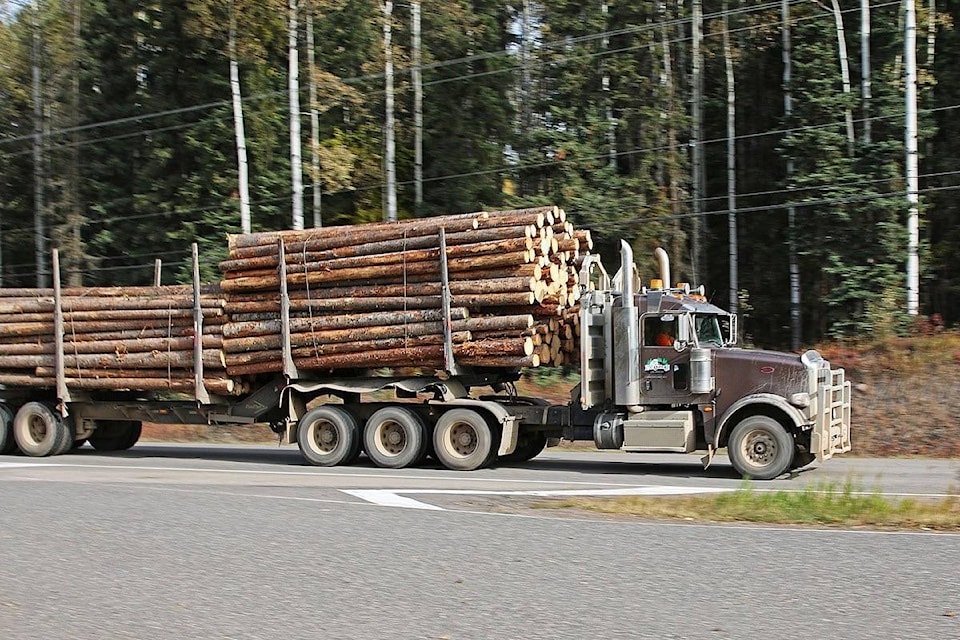Northern Development Initiative Trust (NDIT) has released its second annual “State of the North” report, which offers insight into the current fiscal state of Northern B.C. and what is trending for the future throughout the region. The report includes traditional economic indicator information, overviews of core economic sectors such as agriculture, energy, forestry, tourism, transportation, mining, and oil and gas, and contains regional profiles for the Northwest, Northeast, North Central, and Cariboo-Chilcotin/Lillooet (CCL) areas.
The report shows that the unemployment rate in Northern B.C., which increased in 2014–16, has begun to trend lower, and there are increases in employment in the North Central, Cariboo-Chilcotin/Lillooet, and Northwest regions, which the report attributes to an increase in construction activity.
After a period of decline, the first eight months of 2018 revealed the value of residential building permits were up 30 per cent over the same period in 2017. Additionally, housing starts increased in the first nine months of 2018. In the CCL area, residential building permit values were up by 42 per cent in the first eight months of 2018.
The report describes the economy of Northern B.C. as a mixed bag: while the outlook in energy and the oil and gas sector is positive, forestry is more challenging. A combination of factors including forest fires, which burned approximately 1.2 million hectares of land in 2017, significant fires in the summer of 2018, the historic mountain pine beetle epidemic, and export tariffs to the U.S, have placed challenges on the forestry industry. A reduced supply in the future could mean mill closures, job loss, and negative economic impacts.
While agriculture accounts for a relatively small share of overall employment in Northern B.C. (less than one per cent), the industry supports many related businesses. The CCL area is second-largest in terms of the overall number of farms (919), of which 606 are livestock and 313 are crops.
Forest fires in 2017 burned approximately 1.2 million hectares of land, 83 per cent of which was in the CCL region. Timber supply in the region had already been affected by the mountain pine beetle, and a significant portion of the Annual Allowable Cut (AAC) was to harvest dead trees. A review of the impact of the 2017 fires on the timber supply in the region found that while mid-term timber supply was expected to be reduced, AACs would not need to be adjusted as long as they remain focused on salvaging dead trees.
Tourism in Northern B.C. is a large economic driver, and the report notes that it is generally related to outdoor recreation and to visiting friends and family. The region’s abundant wildlife, outdoor recreation opportunities, and Aboriginal cultural sites draw visitors from other parts of B.C., Canada, the U.S., and parts of Europe. The majority of tourists in the region come from elsewhere in B.C., followed by (in descending order) visitors from the U.S., Alberta, overseas, and the rest of Canada. The largest number of overseas visitors come from Germany.
The wildfires during the summers of 2017 and 2018 are expected to have both short-term and potentially longer-term impacts on tourism in Northern B.C. In the short-term, tourism businesses in areas directly affected by the wildfires lost most of their summer season, which created financial hardship.
In the longer term, there is uncertainty around the effects the forest fires will have on tourism in Northern B.C. Most visitors to the region are B.C. residents, and many come to the region to visit family and friends. The Alaska highway is also an important feature, influencing visits to the region by those travelling between Alaska and other parts of the U.S. Visits by these two groups are unlikely to be significantly affected by forest fires in the longer-term.
The outlook for tourism continues to be positive due to the favourable exchange rate and the continued strength in the U.S. economy. These factors encourage Canadians to vacation in Canada and U.S. visitors to come to Canada. However, subsequent summers with significant wildfires have the potential to adversely impact the outlook for tourism businesses in the affected areas.
The population of the Cariboo-Chilcotin/Lillooet region was relatively stable between 2011 and 2016, although there is some indication that the population declined in 2017 following the forest fires that burned almost one million hectares in the region and resulted in the evacuation of several communities, including Cache Creek and Clinton. In the first half of 2018 employment in construction in the region increased, which likely reflects rebuilding following the forest fires in the summer of 2017.
Businesses in the CCL region are relatively small, with 88 per cent employing fewer than 20 people, and accounting for approximately 40 per cent of employment in the region. Businesses with between 20 and 49 employees account for approximately 21 per cent of employment in the region, with the remainder accounted for by businesses with more than 50 employees.
Median wages in the CCL region tend to be below other regions in Northern B.C. The living wage is between $16.39 (Quesnel) and $17.45 (100 Mile House), and is comparable to other regions outside Metro Vancouver, the Fraser Valley, and the Capital Region. The report also notes that home prices throughout the Cariboo-Chilcotin-Lillooet region have generally been rising over the past two years.
The full report can be found at http://bit.ly/2FXFqh2.
editorial@accjournal.ca
Like us on Facebook and follow us on Twitter
